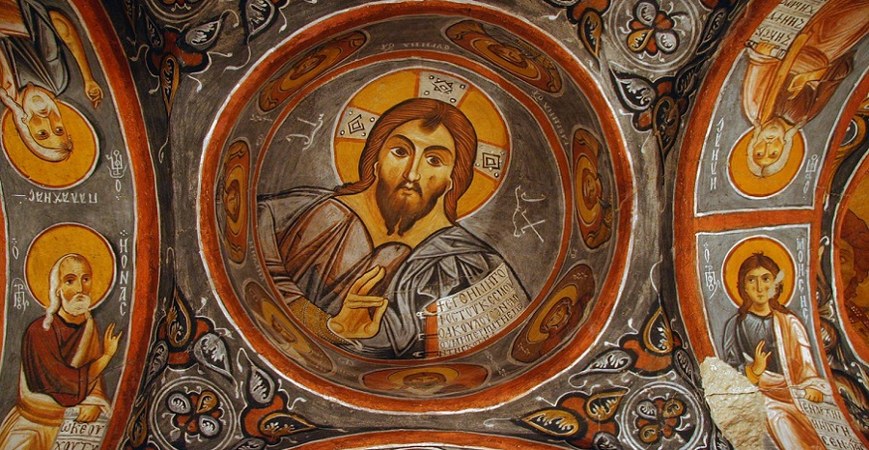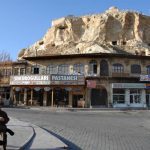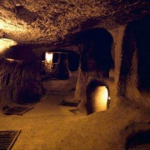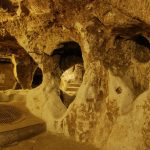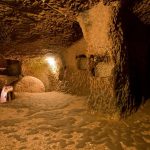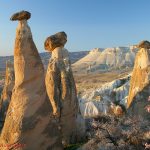Goreme Open Air Museum,
This 30 km2 area between Nevsehir, Urgup and Avanos was affected by the ashes from the Erciyas volcano 100 km. away. This and the fact that the rock layers are of differing degrees of hardness led in time to erosion by wind and rain resulting in the strange Goreme landscape, composed of pillars of soft rock usually topped with a cap of hard rock. The people of the region call these formations ‘fairy chimneys’. The majority of them have been hollowed out and used as houses, churches, and monasteries. The region of Cappadocia where Goreme is situated was famous as the center of Christianity in Anatolia in the Byzantine period. During the VII and IX centuries AD, the Christians of the region carved many churches and monasteries out of the rocks and decorated them with frescoes. After the iconoclastic prohibition was lifted in Christianity illustration of events described in the Bible with representative wall frescoes in the churches and monasteries began once more and this tradition continued until the XII century. The frescoes in the rock churches of Goreme have a unique and significant place in the history of Christian art. Among the churches in the Goreme valley is the Barbara Church with a picture of St. Barbara, the Carikli Church decorated with scenes from the life of Jesus from his birth to the Ascension, the Elmali (Apple) Church which again is illustrated with scenes from the life of Jesus, the Karanlik (Darkness) Church decorated with Bible scenes, the Tokali Church depicting various religious events, and the Yi I an li (Snake) Church which contains a picture of two horsed figures ‘battling with a dragon, Jesus, and other figures.
There are other groups of churches at the Open Palace, Avanos, Avcilar, Ortahisar, Uchisar and other places ‘within 30 km. from Nevsehir. Interesting churches among those at these places are Zelve, Cavusin, Taysanli, Pancarli, Kizilcukur, Gulludere and Halasdere.

